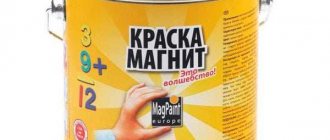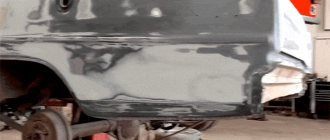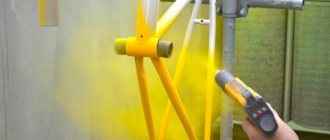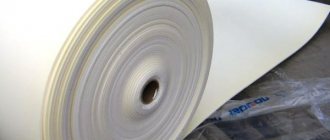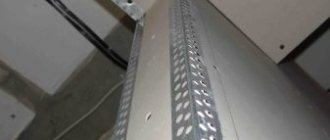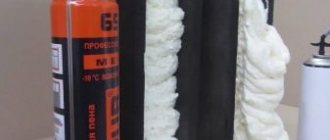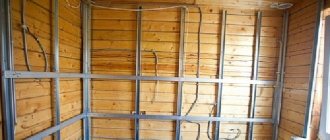It would be strange not to mention such a fairly popular material, whose properties are widely used in industry.
Depending on the purpose, such resin is used to make fiberglass or buttons, bumpers or coverings for greenhouses, and to produce building materials that can withstand strong mechanical loads or pieces of furniture.
Knowing and following the technology, you can achieve high-quality results, even without special conditions. To understand how to work with this tool correctly, let's figure out what we're dealing with.
Production
The creation of the substance is closely related to the oil refining process.
First, propylene, ethylene and benzene are obtained, then these components are treated with reagents to produce anhydrides, polybasic acids, and glycols. As a result of the connection and subsequent special processing, a substance called base resin is obtained.
If it is diluted with toxic styrene as a solvent, the process will result in the creation of a new product - polyester, which can already be sent for sale. However, there is no need to rush.
When adding certain components, the substance is able to change its properties according to a given algorithm.
For example, by adding various vegetable oils, such as sunflower, soybean or rapeseed, you can get a composition similar to an inorganic resin, but more durable and reliable, and if you are interested in polyurethane foam, you need raw materials in the form of a polyhydric alcohol containing more than one hydroxyl group ( polyol).
The life cycle of ready-made mixtures is limited - the resin hardens quite quickly. The polymerization process can be stopped by cooling the product. For this purpose, you can use cold water or a refrigeration unit.
Polyester resin acquires its unique properties due to exposure to thermal energy.
Its source is a catalyst, which acts as an activator of the necessary chemical processes, or an external source. The latter method is less popular due to its high cost.
Summarizing what was written above, we focus on the fact that there are both one-component and two-component types of polyester resins on sale. In the first case, you will have to buy an additional hardener; the latter already has everything you need.
Advantages of using natural polyols and polyester resins
The use of natural and environmentally friendly polyester resins is associated with a number of significant advantages:
- Possibility of reducing harmful impacts on the environment by reducing oil production and refining volumes
- Complete product safety for humans and the environment
- Additional material savings - often natural polyester resins are cheaper than their counterparts made from petrochemical raw materials
offers you natural polyols of exceptionally high quality, made from vegetable oils and products from the processing of rigid polyurethane foams. Based on them, it is possible to produce foamed and rigid polyurethanes and casting resins. The natural polyols produced in our production provide the final product with the highest performance characteristics. Moreover, the cost of these polyols is more than attractive!
Characteristics
A homogeneous, inclusion-free liquid, with a consistency and color reminiscent of flower or buckwheat honey - this is what a saturated polyester resin is when the polymerization process has not yet started.
After adding the hardener, the liquid begins to thicken and becomes first like jelly, then like rubber. When the composition has completely hardened, it can be painted or varnished without any problems.
Advantages of polyester resin: resistance to mechanical stress, UV radiation, high moisture resistance, resistance to temperature fluctuations, versatility, low thermal conductivity, excellent reliability indicators, resistance to chemicals, electrical insulating properties, high “stickiness” to metal, fiberglass, paper, fiberglass, wide scope of application.
Among the disadvantages, perhaps, it is worth noting the high toxicity of the material and shrinkage, inferior to epoxy. But science does not stand still. Modern technologies make it possible to do without styrene.
Resin, oils of non-animal origin - such compositions are environmentally friendly, since natural ingredients are used in production.
As a result, it is possible not only to reduce costs, but also to protect the planet and one’s own health from the negative effects of toxic substances.
Features of fiberglass
Fiberglass is another name for fiberglass; it is a unique material of its kind, consisting of several components. Fiberglass is sold not in the form of a monolith, but in the form of a substance consisting of many fibers. This material is quite durable and, at the same time, light and elastic. Fiberglass is made from epoxy resin and fiberglass, which is the main material for the production of bumpers, fenders and some other elements of the car body.
The use of fiberglass made it possible to reduce the weight of the machine, especially since it has a number of advantages over conventional plastic and metal.
The metal is very heavy, and this entails increased fuel consumption. Over time, metal elements corrode. An irreversible process leads to replacement of the unit, but if the source of corrosion is identified at its initial stage, then repairing the body with epoxy resin and fiberglass will significantly save the budget. Regular plastic is very fragile. The lack of elasticity allows it to be used only for interior decoration. By the way, epoxy can be used to repair not only fiberglass products, but also metal ones.
The production of glass fiber, which is based on epoxy resin, can be carried out in one or two phases. In a one-step production process, glass fibers are drawn from the glass mass. The two-stage production begins with the production of glass beads, which are subsequently converted into fiberglass. The final stage of these technologies is common. On it, the fibers are impregnated with epoxy and the finished material is obtained.
Fiberglass has a number of advantages that make it possible not only to produce parts for cars, but also to repair them. Lightness and strength have already been mentioned, but the advantages do not end there.
- Moisture resistance. When fiberglass is used correctly, the metal underneath will not rust.
- Thermal insulation. Due to its low thermal conductivity, fiberglass has an additional energy-saving function.
- Easy to use. Even without special skills, a car owner can independently repair a car’s bumper, hood, door or threshold.
- Wear resistance. Fiberglass parts are used in difficult weather conditions; they withstand changes in temperature, humidity, as well as the effects of reagents that are used to sprinkle roads in winter.
- Price. Saving money when carrying out auto repairs.
Useful to know > Which epoxy resin manufacturers are located in Russia
Scope of application
Polyester resins are in demand in construction, the chemical industry, mechanical engineering, and shipbuilding. Everyone is familiar with products made from transparent fiberglass.
For example, shower cabins or original bathtubs with window inserts. But these are also products based on polyester material.
This result is obtained due to its synthesis with fiberglass. Resins are included in mixtures for self-leveling floors, making podiums, mastics, glues, paints and varnishes, polymers for electrical equipment, and radio components.
Polyester resin is used as an impregnation to seal materials; it is added in the manufacture of fiberboard, plastics, asbestos-cement boards, and haberdashery.
Painted fiberglass becomes a lighting fixture, cornice, window sill, figurine or artificial stone.
In the automotive industry, primers and putties are made from polyester, and car parts are made from plastic. Boats, boats, ship hulls, portholes are sealed and reliable, thanks to a compound such as polyester resin.
It is used to treat wood and other porous surfaces so that they do not allow water to pass through.
Reinforced plastic and other items are made from unsaturated polyester using casting technology. This composition is also often used in the production of sporting goods and art.
Epoxy resin
Epoxy is a material of synthetic origin. In its pure form, it is unsuitable for use, since it is not capable of turning into a solid state on its own. To harden, a special hardener is added to the epoxy resin in the required proportion.
To use it correctly, you need to know the pros and cons of epoxy resin. This type of resin is valued for its strength characteristics. It is resistant to aggressive chemical compounds such as acids and alkalis. The advantages of epoxy include: moderate shrinkage, high wear resistance, and excellent strength. The hardening process occurs over a wide range of temperatures, but the recommended range in everyday life is from +18 to +25 degrees. The hot curing method is used to produce high-strength products that can withstand extreme loads.
This type of resin is used both in industry and at home. The scope of their use is becoming wider thanks to the creation of new compositions with optimized properties. By mixing different types of epoxy resins and hardeners, it is possible to obtain a final product with completely different characteristics.
The most famous manufacturers of polyester resins
There are many product options, both released in the Fatherland and abroad. The minimum package weight for most is one kilogram.
Neon S-1
Rempolymer's inorganic polyester resin with high quality fillers has proven itself to be one of the best products used for car upgrades and boat repairs. Toxic, contains styrene.
Has low viscosity and minimal shrinkage. Chemical activity is average.
Application time is 15 minutes, final polymerization occurs within 45 minutes.
Repair Resin Reflex Reoflex
Repair Resin, also known as Reflex polyester resin, has a different orthophthalic base. Used in lamination. Less toxic due to reduced styrene content. Special components are capable of plasticizing the material.
By adding them, you can obtain a composition that is convenient to use when repairing bumpers and eliminating cracks in metal surfaces. It is characterized by significant adhesion to wood, primers, metal, laminate, paint and varnish coatings.
The coating is resistant to temperature changes, mechanical damage, vibration, and chemical influences (oils, gasoline, lubricants).
O-12335 AL NorsodyneO-12335 AL
This grade of resin has high resistance to UV radiation and low viscosity.
Pre-accelerated, transparent consistency. Initially it has a lilac color, which usually disappears after polymerization and the product becomes completely clean, devoid of pigment, transparent as a tear.
However, when the fill thickness is more than 30 millimeters, it may appear as a tint. The gelatinization period is quite long, 16-22 minutes.
The catalyst is Butanox or Kurox in a proportion of 0.3% to 1% (depending on the initial mass of the substance). Suitable for use at plus 15.
Used for casting art objects, jewelry, hybrid furniture, transparent fittings, as a resin-fill, etc.
If necessary, it can be tinted with special pigments in the form of pastes and powders. Does not require degassing and corrosion protection.
Novol Plus 720
Another extremely popular remedy. Novol Plus 720 (Novol Plus 720) is ideal for repairing rusted parts, holes, large holes, yachts, trailers, car bodies, strengthening plastic structures.
The hardener is benzoyl peroxide paste. The connection is strong and easy to grind. Minimum operating temperature +10. When laminating by hand, you need to mix polyester resin and glass mat or fiberglass in a ratio of 2 to 1.
Subsequently, polyester finishing putty, almost all known primers, varnishes, and paints can be applied to the surface treated in this way.
Other brands
The composition of Eskim ES-1060 also allows you to glue materials and laminate surfaces.
It differs from analogues in its low sensitivity threshold to the temperature at which curing occurs, as well as to the amount of solvent. The product is easier to apply due to its less viscous consistency. Easy to tint, not picky about most pigments. Can be mixed with talc, cement, gypsum, suitable for making self-leveling floors.
Polipol 3401-A is a polyester resin characterized by low shrinkage and virtually no deformation after hardening. Widely used in the production of chemical-resistant containers, parts of amusement rides, swimming pools, and boats.
The Polipol resin series is in demand in the automotive industry, construction, and shipbuilding. Transition time to gel state is 30 minutes. Not as toxic, although it contains styrene. Maintains viscosity at rest and is thixotropic.
Repair of metal components
Epoxy resin for a car will allow you to cope with pockets of corrosion on body parts. The degree of damage may vary, but the car owner must understand that the larger the area of the source, the more difficult it is to carry out repair work. Fiberglass in epoxy cannot replace metal in strength, so it is only possible to repair those areas that are not load-bearing.
Particular attention should be paid to metal preparation. Rust should be removed using phosphoric acid (rust converter) and a wire brush. The cleaned surface is degreased and coated with a primer. If these procedures are neglected, moisture will get under the fiberglass patch and the metal will begin to rust again.
The principle of repair is that glass fabric impregnated with resin is applied to the source of corrosion, even if through holes have appeared. Depending on the condition of the metal, several layers may be required. After the resin has cured, the patch is cleaned with sandpaper, degreased and primed again. After this, you can begin applying putty to create a relief and level the surface.
Body painting work must be carried out in a special chamber with sophisticated equipment. But some life hacks from experienced craftsmen will allow you to seal holes and paint areas of corrosion even at home.
The main differences between unsaturated polyester resins and saturated ones
The composition is what gives such resins special properties and allows them to be used for their intended purpose.
Polyester saturation occurs due to excess glycol (polyol). The polymer is resistant to dirt, very hard and durable, universal, not sensitive to climatic factors, and does not contain double or triple bonds in the main chain.
Such characteristics make it possible to use it as a raw material for roll coatings, including thermal coatings, primers, substrates, and printing inks. Unsaturated polyester resin is the most popular.
Double bonds in the molecular structure, obtained through the condensation of unsaturated dicarboxylic acids, give the polymer such properties as: heat resistance, poor electrical conductivity, good fluidity when heated, resistance to chemical corrosion, high bending strength, tensile strength, compression strength.
It is mainly used in the production of radio and electrical appliances, toners, printers, cast insulation, sheets, bulk molding compounds, and fiberglass coatings.
Polymerization does not require high temperatures; 23 degrees above zero is sufficient. An absolute advantage of unsaturated resins is the absence of emissions of harmful by-products.
Application of epoxy resin
Epoxy resin is primarily used as a material for gluing surfaces: wood, leather, metal and other non-porous. This composition is in demand in electronics, mechanical engineering and aviation. Fiberglass, which is actively used in construction, is also made from epoxy. The resin is used for waterproofing floors and walls, including external ones. Finished fiberglass products after grinding and additional processing are popular in decorating interiors.
Three Important Components
A monomer solvent is needed to reduce the density of the polyester.
Catalysts such as hydroperoxide help convert a material from a liquid to a solid state. An accelerator is accordingly added to shorten the final curing time. Such substances are, for example, cobalt salts. Only correctly distributed roles among the copolymerization participants will allow you to control the solidification process and obtain a predictable result in its end.
Epoxy anticorrosive
Areas most exposed to moisture and reagents are coated with a special anti-corrosion compound. The properties of epoxy resin allow it to be used as an anticorrosive agent. But epoxy anti-corrosion compounds differ from polishes. They should protect the car body not for several months, but for several years.
In addition to epoxy resin, the anticorrosive composition includes other substances, the list of which depends on the place of work. For example, for the underbody of a car it is recommended to use pastes containing wax and bitumen. The metal of the wheel arches is subject to constant bombardment of small stones, so rubber is added to the anti-corrosion compound. External body elements (lower parts of doors and sills) are treated with resin with aluminum powder or zinc paste. Almost all brands have one drawback - the likelihood of delamination at low temperatures. The applicability of such an anticorrosive agent depends on climatic conditions.
Useful to know > Artline brand epoxy resin from a domestic manufacturer
How to work with polyester resin correctly
It's always a good idea to first read the instructions included with your purchase. The required proportions, temperature conditions and safety rules are indicated there. For the first batch, mix 0.5 -1 liter of resin with the accelerator.
The additive should be administered slowly. The main thing is to prevent air from getting into the mass.
Mix the ingredients thoroughly, but not quickly. If the liquid changes color to blue or gets very hot, do not be alarmed.
This is just the start of the polymerization process. If you want to slow down the process, use cold water or air as an inhibitor.
After 20-60 minutes, the liquid will begin to resemble jelly. Everything you planned to do with the composition must be done before this moment. In particular, it will no longer be possible to glue products together with a gelatin-like agent.
It is also not recommended to move the material from this stage until complete polymerization.
Final setting takes from several hours to two days and depends on the starting raw material. All declared properties will appear fully in 1-2 weeks.
Application at work
Before you start working with polyester resin, it is necessary to determine the correct ratio of all components of the prepared working composition. To do this, you must follow the manufacturer's instructions - it indicates the exact proportions of solvent, activator and accelerator (hardener). Since the active curing process begins immediately after mixing the components and the work process time is limited, you need to be prepared and plan your actions correctly. If the work is done alone or for the first time, then a small amount of material is usually used or the work is carried out in several stages.
When mixing ingredients, it is important to do it carefully. When vigorously stirring the composition, small air bubbles will form - if they remain before curing, then after it will negatively affect the quality and characteristics of the compound.
After just 20 minutes, the activated polyester resin enters the gelatinization stage - before this point, all work must be stopped. In order to understand and control when the curing stage begins and the temperature of the composition reaches its peak, color indicators were invented that are added to the resin in production - they can be blue, light blue, pink.
Typically, polyester resin is cured at room temperature. To slow down the polymerization process, as well as to increase shelf life, you need to cool the working composition. Any place with a low temperature is suitable for this - it could be a container of cold water or even a refrigerator. On the contrary, to accelerate polymerization, heating of the composition is required - any heat source is suitable for this, for example, heating devices (without an open heating coil) or even direct sunlight.
The polymerization stage can take from 1 hour to a day. Complete curing with consolidation of the properties of the compound lasts up to 14 days.
Fake diamond
A very popular finishing material, whose production is also closely related to polyester resins. To do this, dyes, glass, mineral chips and other components are added to them. For cornices and tabletops, a process called casting is used.
Souvenirs and interior items are made from artificial marble. There is nothing difficult in the process if you find the right shape. Drying of finished products occurs under the influence of hot air. The most convenient way to do this is in a drying cabinet.
Glypthal resins (unmodified)
Glypthal resins are condensation products of glycerol with phthalic anhydride.
The process of resin formation proceeds according to the scheme shown in Fig. 1.
Rice. 1.
When producing glyphthalic resins, acidic glycerol monoesters are formed at the beginning of the process, and the acidity of the mixture is greatly reduced. Glycerol diesters are then formed. Acid esters of glycerol react further and form a mixture of polymers with different molecular weights. The process of resin formation is accompanied by a decrease in the acid number and the number of hydroxyl groups of the reaction product, an increase in the softening temperature, an increase in the polymerization rate and a decrease in solubility. Glyphthalic resins are prepared in the following ratio: glycerin - 29.2%, phthalic anhydride - 70.8%.
This formulation corresponds to a 2:3 molar ratio between glycerin and phthalic anhydride, that is, the number of hydroxyl groups of glycerin is equal to the number of carboxyl groups of the acid. However, during the cooking process, complete neutralization does not occur, that is, the production of neutral esters (acid number 40 mg/KOH), since there is a danger of the resin transitioning from liquid and fluid to an insoluble three-dimensional polymer. Therefore, the process is completed much earlier, depending on the purpose of the resin. The process of cooking glypthal resins is most often controlled by the rate of polymerization (on an electric stove at 250 ° C). The polymerization rate of the resin must be set for each batch of resin.
For the production of resin, small-capacity boilers made of aluminum or stainless steel are used. The technological process for manufacturing resin No. GF-1350 is as follows: glycerin is loaded into the boiler, which is heated to 120 °C. Then phthalic anhydride is introduced and melted with stirring. After the phthalic anhydride has melted, the mass in the boiler is heated to 190–200 ° C and maintained at this temperature until the finished resin is obtained, which is poured into baking trays through the lower drain valve. Once cooled, the resin is ground into a fine powder in a crusher.
The finished glyphthalic resin in appearance is a solid, brittle mass from yellow to dark brown, transparent in a thin layer (Table 1).
Table 1
| Index | Resin group no. | |||
| I | II | III | IV | |
| Softening point according to Kremer-Sarnov, °С | 80–85 | 86-94 | 95-103 | 104 and above |
| Acid number, mg/KOH, no more | 135 | 132 | 125 | Not determined |
| Solubility in alcohol-benzene mixture (1:1), % not less | 97 | 94 | 80 | 40 |
The resin must be hard, mirror-smooth when fractured, uniform in color and must not contain any foreign impurities. The third group resin may have a spongy structure.
To obtain varnishes, the resin is dissolved in an alcohol-toluene mixture (1:1). Glypthal varnishes are prepared with different resin contents. Varnishes have a high adhesive ability and dry fairly quickly in air to form an adhesive varnish film that softens when heated. When heated, the varnish film slowly becomes infusible and insoluble. Glypthal resins and varnishes are used for moldable and hard mica materials and products.
Glass mats
Fiberglass mat is a type of fiberglass, cut into five centimeter pieces, connected to each other like fiberglass, but inferior to it in strength. This is due to shorter fibers than fiberglass.
However, it is much easier to work with.
The production of this type of fiberglass is impossible without polyester adhesive material. The glass mat bends well and transforms to the required shape. It can be as thin as a veil or as thick as a cotton blanket.
Technological process
The process of manufacturing unsaturated polyester resins takes place in a stainless steel or enameled reactor, equipped with a bubbler for introducing inert gas (nitrogen or CO2) with a reflux condenser and a temperature measuring device.
The condensation process of unsaturated polyesters in order to avoid their gelatinization is carried out in an atmosphere of inert gas (nitrogen or carbon dioxide) or in the presence of inhibitors: aromatic polyoxy compounds or amines. Condensation is also carried out in solvents, followed by their distillation in vacuum.
Below is the technological process for making polyester No. 1.
Castor oil, maleic and phthalic anhydride are loaded into a thoroughly washed reactor.
The reaction mixture is heated to 110–120 °C, the stirrer and nitrogen flow are turned on. Then the temperature of the mixture rises to 190 °C, and the condensation process is carried out at 130–140 °C until an acid number of 75–80 mg/KOH is achieved. Then 2/3 of the amount of ethylene glycol is introduced. The temperature of the reaction mixture is maintained within 130–140 °C, and after reaching the acid number of 40–45 mg/KOH, the remainder of ethylene glycol is added. Condensation continues at 130–140 °C until an acid number of no more than 20 mg/KOH is obtained. After this, the heating is turned off, the resin is cooled to 100–110 °C, simultaneously purged with nitrogen and unloaded. The finished resin is stored in a cold place. Guaranteed shelf life 3–4 months.
Table 2 shows the properties of polyester resins used in the electrical industry.
table 2
| Index | Resin | |||||
| № 1 | № 2 | № 315 | № 220 | EMO-1 | ESFO-1 | |
| Resin appearance | Light yellow to dark brown | Light to dark brown | Light yellow to green or brown | Transparent or slightly cloudy | ||
| Solubility in toluene 1:1 | _ | _ | _ | _ | Full | |
| Viscosity at 20 °C according to VZ-4, s | 20—40 | 20—40 | No more than 26 | 25 | 20 | 18 |
| Acid number, mg/KOH, no more | 20 | 20 | 13 | 70—83 | 30 | 30 |
| Content of hydroxyl groups, %, no more | 3,5 | 4,0 | 7 | 3,5 | _ | _ |
Note.
Polyester No. 1 (and No. 2) must be completely soluble in styrene. A solution with 1% benzoyl peroxide (by weight of the solution) should give a solid polymer at 60–100 °C for 1 hour.
